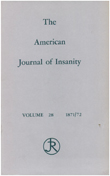Variation in ECT use in the United States
Abstract
OBJECTIVE: The authors measured the variation in ECT utilization rates across 317 metropolitan statistical areas of the United States and determined to what degree this variation is associated with health care system characteristics, demographic factors, and the stringency of state regulation of ECT. METHOD: Data from APA's 1988-1989 Professional Activities Survey were used to estimate ECT utilization rates for the metropolitan statistical areas. Multiple regression analysis was used to determine the relative influence of provider, demographic, and regulatory factors on variation in ECT use across areas. RESULTS: Among the psychiatrists surveyed, 17,729 reported treating 4,398 patients with ECT during the study period. No ECT use was reported in 115 metropolitan statistical areas. Among the remaining 202 metropolitan statistical areas, annual ECT use varied from 0.4 to 81.2 patients per 10,000 population. The strongest predictors of variation in ECT use across metropolitan statistical areas were the number of psychiatrists, number of primary care physicians, number of private hospital beds per capita, and stringency of state regulation of ECT. CONCLUSIONS: Rates of ECT use were highly variable, higher than for most medical and surgical procedures. In some urban areas, access to ECT appears limited. Predictors of variation in ECT rates have implications for expanding access to the procedure. The extent of variation suggests psychiatrists continue to lack consensus regarding the use of ECT. Better data on the effectiveness of psychiatric treatments may lead to a broader professional consensus and may narrow variations in clinical practices.
Access content
To read the fulltext, please use one of the options below to sign in or purchase access.- Personal login
- Institutional Login
- Sign in via OpenAthens
- Register for access
-
Please login/register if you wish to pair your device and check access availability.
Not a subscriber?
PsychiatryOnline subscription options offer access to the DSM-5 library, books, journals, CME, and patient resources. This all-in-one virtual library provides psychiatrists and mental health professionals with key resources for diagnosis, treatment, research, and professional development.
Need more help? PsychiatryOnline Customer Service may be reached by emailing [email protected] or by calling 800-368-5777 (in the U.S.) or 703-907-7322 (outside the U.S.).



